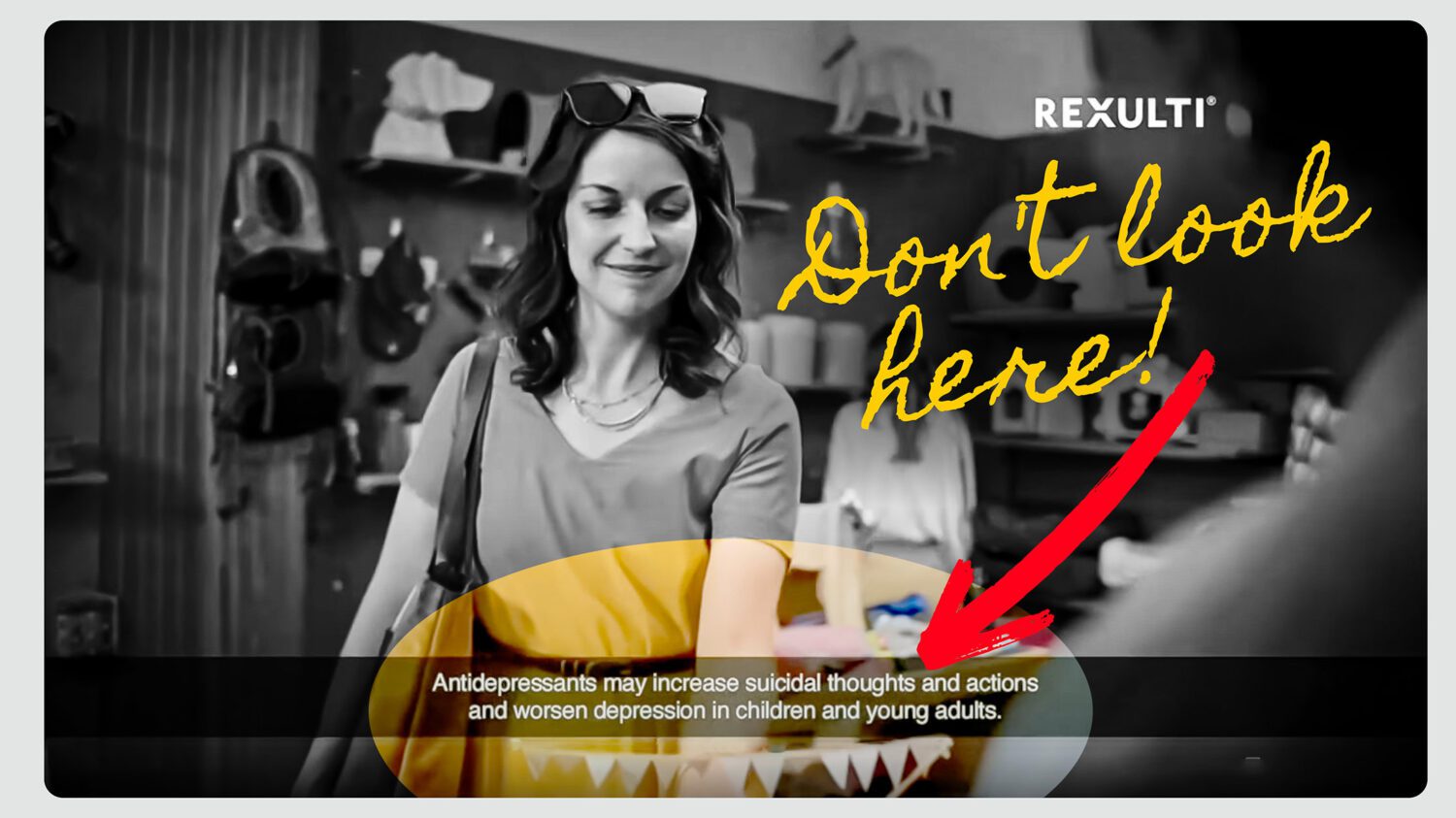Big Pharma’s New Endgame: Sidestepping FDA’s Stricter Drug Ad Rules

The familiar setup plays out again: a woman stares into a mirror, her reflection tired and somber. Then, as she starts an antidepressant, her life magically transforms. Her corgi prances at her feet, and her family reunites joyfully—all while a voice rattles off chilling side effects: suicidal thoughts, strokes, or even death.
Logan H. Merrill, writing for Freedom Magazine, highlights this practice in a recent investigation, calling out the nearly $40 billion psychiatric drug industry for its mastery of distraction. For years, Big Pharma has relied on these tactics to downplay the risks of their products. But new FDA rules, effective November 20, 2024, aim to change that.
Cracking Down on Cuddly Distractions
As Merrill explains, the updated FDA rules require drug ads to present side effect warnings in a “clear, conspicuous, and neutral manner.” This nine-page guideline, more than a decade in the making, bans manipulative visuals and soothing audio designed to distract viewers.
Merrill describes a recent Rexulti commercial as a prime example: while the voiceover warns of side effects like permanent muscle disorders, coma, or death, the screen fills with heartwarming scenes of corgis and family picnics. Such ads, Merrill writes, have historically flouted earlier FDA rules by disguising their warnings in happy imagery.
But under the new guidelines, the days of glossing over grim realities with adorable pets and warm lighting may be numbered.
Big Pharma’s Legal Gymnastics
However, Merrill astutely notes that pharmaceutical companies are unlikely to roll over. Instead of compliance, they’re likely searching for ways to exploit loopholes. In Freedom Magazine, Merrill envisions a scenario in which corporate boards, faced with these new rules, quickly call in their legal teams to strategize a workaround.
One glaring loophole, as Merrill outlines, lies in the rules’ limited scope: the regulations apply only to television and radio ads. They don’t touch social media, telehealth companies, or online influencers—channels that have become central to modern advertising.
The Rise of Influencers and Telehealth
Merrill warns that Big Pharma has already begun shifting its marketing efforts online, where the FDA’s oversight doesn’t reach. Social media influencers, in particular, are becoming key players in promoting psychiatric drugs. These influencers are often viewed as more relatable and trustworthy than traditional ads, which Merrill sees as a dangerous trend.
Adding to the problem, telehealth companies are now partnering with drugmakers to promote medications under the radar. As Merrill writes, these platforms—free from the same advertising restrictions as the manufacturers—offer yet another avenue for Big Pharma to sidestep transparency.
Congress Takes Aim at Loopholes
In response to this growing concern, Merrill reports that Senators Dick Durbin (D-IL) and Mike Braun (R-IN) have introduced the Protecting Patients from Deceptive Drug Ads Online Act. This bill aims to close the loopholes by holding not just drug manufacturers but also influencers and telehealth companies accountable.
As Merrill explains, if the legislation passes, anyone promoting prescription drugs online would be required to disclose who is paying them. Such a move could force transparency across the board—a direct challenge to Big Pharma’s current practices.
A Battle for Truth
Throughout Freedom Magazine’s exposé, Merrill emphasizes the urgency of addressing these loopholes. While the FDA’s new rules mark a step toward accountability, they leave significant gaps that allow pharmaceutical companies to continue their manipulative tactics unchecked.
Merrill’s reporting makes one thing clear: the battle for truth in drug advertising is far from over. As the industry pivots to the unregulated digital frontier, the stakes for consumer safety and transparency couldn’t be higher.
Big Pharma, as Merrill deftly highlights, has built its empire on distraction. Whether it can be forced into genuine accountability remains to be seen.









